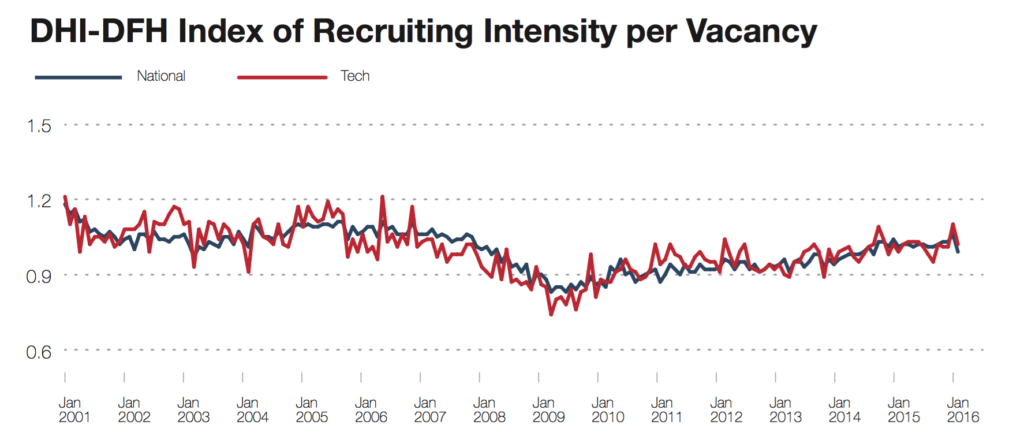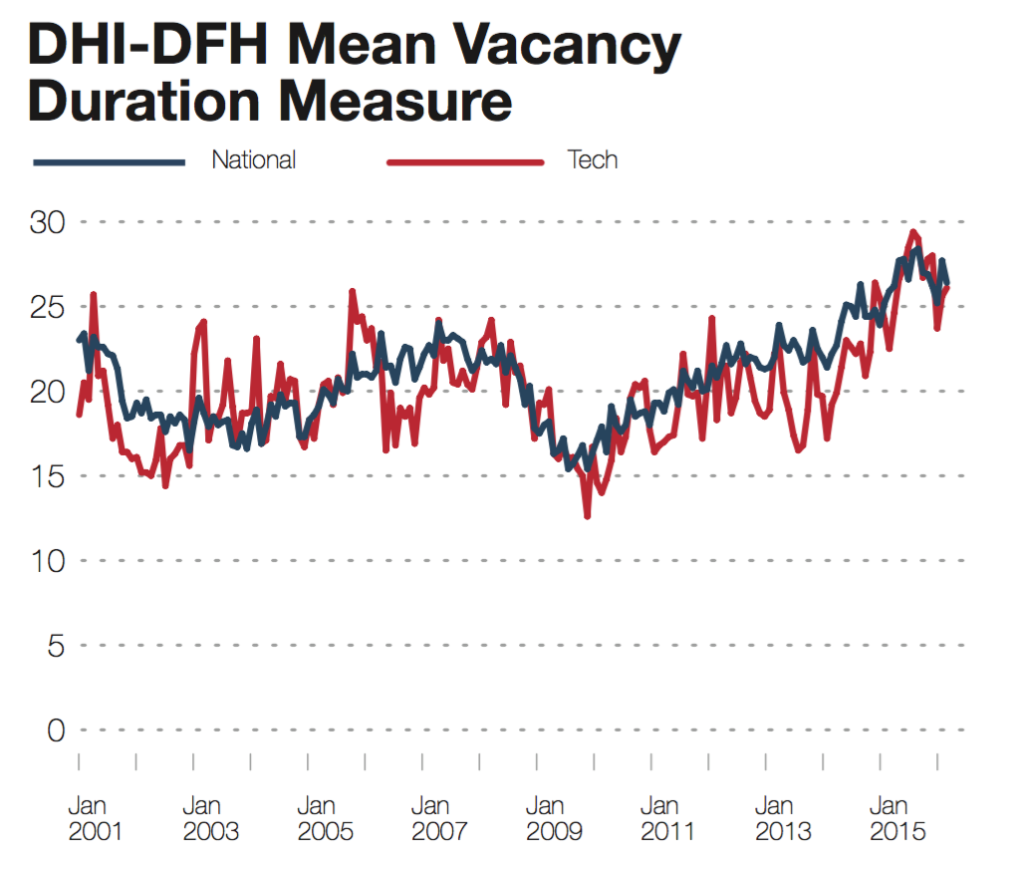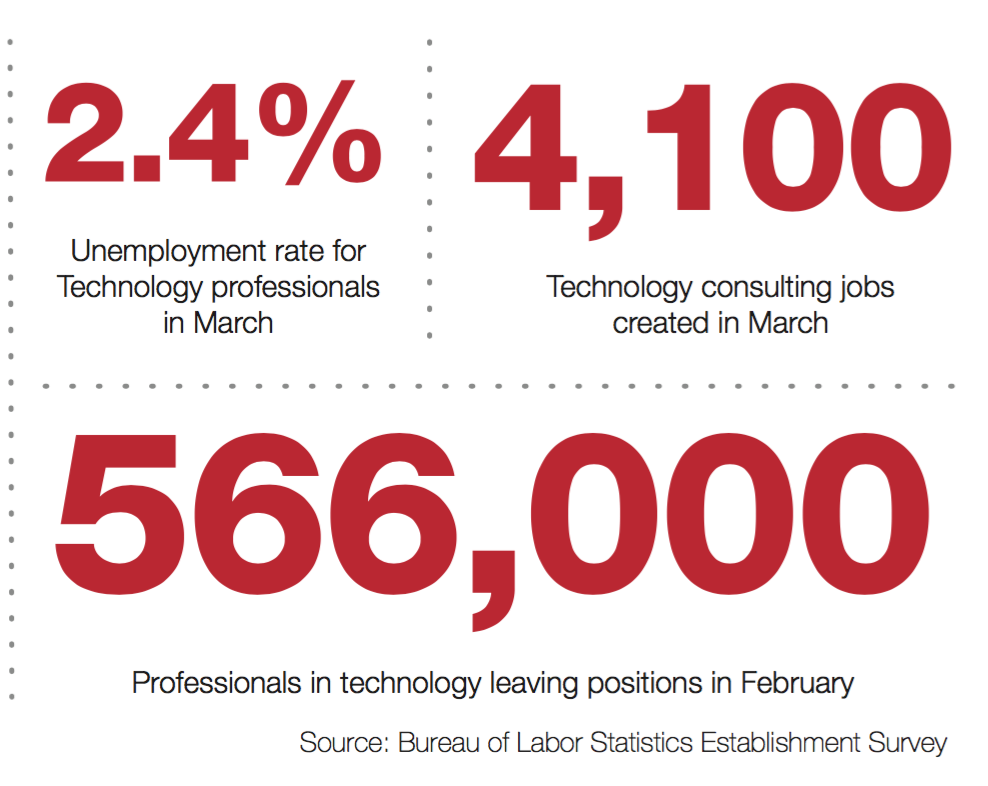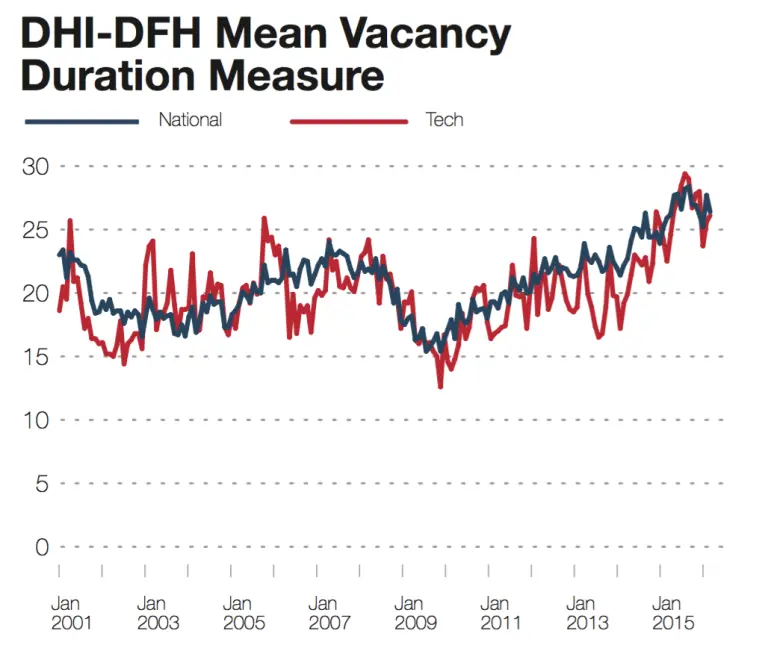The DHI-DFH Mean Vacancy Duration measure found the average job vacancy duration of Professional and Business Services jobs to be 25.9 working days in 2016. In February, technology jobs remained open for 26.1 working days, up from 25.6 working days in January. The 10-year average for the industry is 20.4 working days. This is in line with the national average of 26.4 working days.

(Click here for a PDF of this Hiring Indicators report.)
“We continue to hear from our customer there’s strong demand for highly skilled professionals in healthcare, financial services and technology” said Michael Durney, President and CEO of DHI Group, Inc. “Longer fill times lead to projects missing deadlines, peers becoming overtaxed from picking up responsibilities, or increased patient loads from understaffed shifts. Prepared hiring managers will have a bench of talent sourced and ready to start as soon as a position opens.”

Meanwhile, the DHI-DFH Recruiting Intensity index saw the intensity of companies to fill tech jobs dip to 1.01 in February from 1.02 in January. This recruiting intensity includes actions by employers to fill a job, including payments on help wanted ads, certain recruiting methods, applicant screening process, hiring standards and the attractiveness of compensation packages offered to prospective new hires. “The level of technology professionals voluntarily leaving their positions is above the 10-year-average indicating confidence in the market and job opportunities,” said Bob Melk, President of Dice. “With a tight labor market and low unemployment rate for tech pros, employers will need to be proactive about sourcing and building up their talent pipeline before a position becomes available.”

About
The DHI Hiring Indicators offer labor market insights from career provider DHI Group, Inc. and Dr. Steven Davis, William H. Abbott Professor of International Business and Economics at the University Of Chicago Booth School Of Business and a Visiting Fellow at the Hoover Institution. The DHI-DFH vacancy duration measure reflects the vacancy concept in the Job Openings and Labor Turnover Survey (JOLTS) in the United States. Specifically, a job opening gets “filled” according to JOLTS when a job offer for the open position is accepted. So the vacancy duration statistics refer to the average length of time required to fill open positions. Typically, there is also a lag between the fill date and the new hire’s start date on the new job. The Indicators include a monthly report and data release to help employers, professionals and decision makers deepen their understanding of current workforce trends. The category of Professional and Business Services includes professional, scientific and technical activities for others. The category of Computer Systems Design and Related Services rolls into this.



